A Celebration of Heritage and Diversity
by: Debrah Wright
Black History Month serves as an annual tribute to the remarkable achievements of African Americans, highlighting their pivotal role in shaping the nation’s history. In Waco, Texas, we proudly participate in this celebration, fostering a sense of community and understanding through a diverse array of events throughout the month.
Originating from “Negro History Week,” conceived by historian Carter G. Woodson and other influential African Americans, Black History Month gained official recognition in 1976, with every U.S. president designating February as a time to honor the contributions of African Americans.
Waco’s rich history is deeply intertwined with the presence and influence of African Americans, dating back to the mid-nineteenth century when the first black residents, initially brought as slaves, played pivotal roles in the region’s development. Post-Civil War, they actively worked to rebuild their lives as freedmen and freedwomen, contributing significantly to the growth of Waco and McLennan County.
From the historic HBCU Paul Quinn College to the Farmers Improvement Society advocating for equal treatment post-Civil War, Waco’s Black history is filled with inspiring narratives. All Waco residents and visitors alike can celebrate Black History Month by exploring Black-owned businesses and participating in various events and learning opportunities throughout February.
Highlighted events include a Ceremonial Groundbreaking for the Memorial to Enslaved Persons hosted by Baylor University on February 23 at 1:30 P.M. and a Black History Walking Tour led by experts from Baylor University’s Institute for Oral History on Saturday, February 24th.
Join experts from Baylor University’s Institute for Oral History as they lead you through Downtown Waco for its third annual Black History Walk. Gain insights into historic locations during this educated tour, where guides will highlight influential Black figures like Waco’s first Black mayor, the initial Black female mayor, and the late Commissioner Patricia Miller.
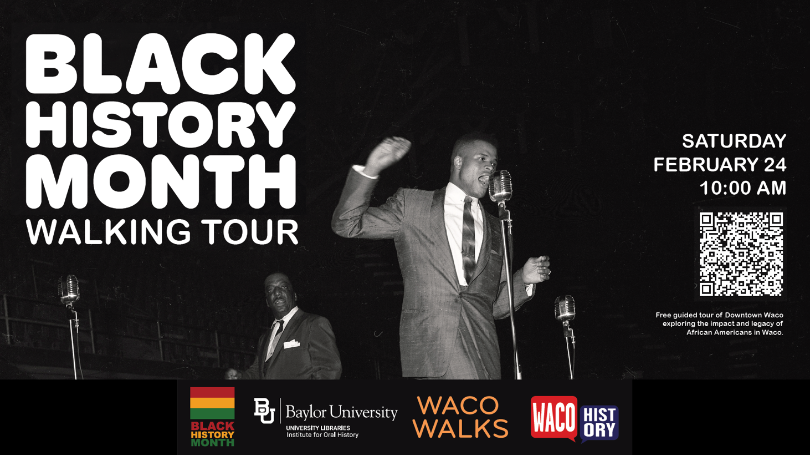
Notably, Waco’s Black history once thrived on Bridge Street, but after the 1953 tornado, business owners relocated to Elm Avenue. The walk commences at the McLennan County Courthouse in downtown on Saturday, February 24th, running from 10 a.m. to 12 p.m. Be part of this enriching journey uncovering the impactful stories woven into Waco’s historical tapestry.
Waco residents and visitors can also embark on a self-guided tour of Black history throughout the city, curated by Baylor’s Institute for Oral Histories and the Texas Collection. This tour, running from February 1 to 29, explores significant landmarks, churches, bridges, and businesses that contribute to Waco’s diverse heritage.
Additional events include “Black History in the Archives” on February 27th at 4 p.m., hosted by the Black Faculty & Staff Association and The Texas Collection at the Carroll Library, and an Afro-LatinX Cultural Heritage Celebration on February 28th, hosted by the Society for Advancement of Chicanos/Hispanics and Native Americans in Science at Baylor University in the Student Union Building at 5 p.m. There is also the Big XII Conference on Black Student Government, hosted by Iowa State University from February 29 to March 3, promises a series of engaging discussions and activities.
Explore the Mini Black History Museum at the Dewey Community Center before it closes on February 29th. The Dewey team has curated an excellent display, and the exhibit is available during the following hours:
Monday to Thursday: 9 a.m. to 9 p.m. (museum closed from 3 p.m. to 6 p.m.)
Friday: 9 a.m. to 3 p.m. (museum closed after 3 p.m.)
Saturday: 9 a.m. to 3 p.m.
Don’t miss the chance to immerse yourself in this enlightening experience celebrating Black history.
Furthermore, Creative Arts Experiences held throughout the month provide opportunities to delve into the works of influential Black authors, musicians, and theatrical performances.
Experience the enchanting melodies of America’s most original genre, jazz, with Baylor’s Concert Jazz Ensemble on February 29 at 7:30 p.m. in Jones Concert Hall, Glennis McCrary Music Building.
Join us in Waco as we commemorate Black History Month, embracing the past, present, and future of our diverse community.
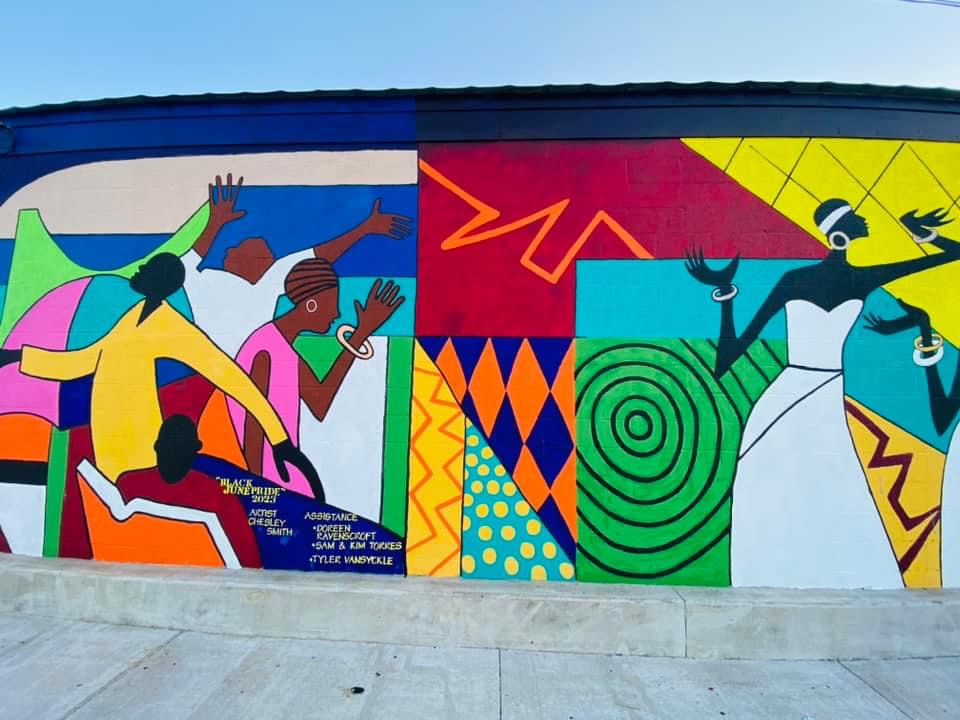
“Black Pride”
by Debbie Wright
Art has long been recognized as a potent medium for expressing emotions, stimulating dialogue, and challenging societal conventions. In recent times, the significance of representation in art has gained considerable acknowledgment due to its ability to amplify diverse voices, bridge divides, and foster a sense of belonging within communities. An exemplar of this principle can be found in Chesley Smith’s new mural project, proudly titled “Black Pride,” located on the wall of Marilyn’s Gift Gallery on Elm Ave in Waco, Texas.
When asked about his inspiration for the mural, Smith said, “My goal is to inspire the community to embrace their African American culture and celebrate their heritage.”

With 45 years of experience as an educator, including teaching art in both college and Waco public schools for 22 years, Smith brings a wealth of knowledge and passion to his artistic endeavors. Furthermore, he previously taught at Paul Quinn College, the oldest historically black college in Texas, which holds significant historical value as part of Waco’s legacy as the “Athens on the Brazos”. The mural project is particularly poignant as it also stands near the former location of the Paul Quinn College campus, situated at Eighth Street and Mary Avenue.
Smith has left his artistic imprint in other prominent Waco landmarks as well, such as the old Paul Quinn Johnson Hall and the historic Anheuser-Busch building on 10th and Webster Ave. Both structures are presently undergoing redevelopment, contributing to the city’s ongoing evolution.
Smith’s mural project on Elm Ave in Waco, Texas, required approximately three months to complete, spanning from the initial stages of design to the final touches. Throughout the process, Smith collaborated with Marilyn’s shop, receiving some amazing community support from individuals such as Doreen Ravenscroft, Kim Torres, Sam Torres, and Tyler Vansyckle. Moreover, the mural project aligns with the mission of Marilyn’s shop, which specializes in offering a selection of African American attire and artifacts. In combination, the mural and the shop contribute to the promotion of black pride, unity, and a more inclusive community in Waco.
Chesley Smith’s commitment to art and representation has left an indelible mark on Waco, fostering dialogue, honoring heritage, and inspiring the community to embrace and celebrate their African American culture. His mural project serves as a testament to the transformative power of art and the importance of representation in promoting inclusivity and understanding within our communities here in Waco.
*Photos from the Art on Elm Facebook page
From the City of Waco Public Information Office
The Texas Historical Commission presented a THC Preservation Award of Merit to the First Street Cemetery Memorial Advisory Committee during the City of Waco Council Meeting Tuesday, Aug. 3.
The First Street Cemetery committee members Annette Jones (retired, City of Waco assistant city attorney), Nesta Anderson (archaeologist, principal investigator), and Melanie Nichols (archaeologist) were granted the Award of Merit for their significant contributions in historic preservation and public outreach through documentation of the First Street Cemetery project. Formal presentation of the award was postponed due to the COVID-19 pandemic.
The First Street Cemetery, the oldest public cemetery in Waco, is south of the Brazos River and east of Interstate 35. After the 1960s construction of I-35, the City developed plans for a Texas Ranger Museum and campground, and a court order was issued in 1968 to disinter human remains within the proposed construction space to another portion of the cemetery.
However, in 2007, during construction of the Texas Ranger Company Headquarters building, it was discovered that human remains were still located in the area covered by the 1968 court order. As a result, the City, the National Park Service, THC, and the Advisory Council on Historic Preservation executed a Memorandum of Agreement for the mitigation of adverse impacts to historical property and to remove the land use restrictions.
The Committee, consisting of sixteen community members, served between 2013 and 2018; it was formed and tasked with making recommendations to the City Council on the reburial of the remains, appropriate memorial services, plaques, and memorials to be erected at First Street and the reburial site. The Committee carefully took into consideration the community’s input and consistently provided thoughtful feedback for the many decisions to be made regarding reburials.
The THC and the City of Waco recognize the commitment of the Committee and these additional individuals to ensure a positive outcome for the impacts at First Street Cemetery and commend the example they provide for future cemetery projects.
The THC’s Award of Merit recognizes the efforts and/or contributions of an individual or organization involved in preserving Texas’ cultural and historical resources. This award recognizes the efforts and/or contributions of an individual or organization involved in preserving Texas’ cultural and historical resources.
The Act Locally Waco blog publishes posts with a connection to these aspirations for Waco. If you are interested in writing for the Act Locally Waco Blog, please email Ferrell Foster at [email protected].
The Historic Waco Foundation has launched a strategic process to understand Waco’s story from a number of perspectives in order to form future partnerships and programs that would offer the greatest benefit to the community. This post is one in a series to share with you how that work is progressing and how you can get involved. For the rest of the posts in this series, click here: Historic Waco Foundation Series. — ALW
By Clint Lynch
America today is in a revolutionary state of mind. We continue to tear down prohibitive, outdated norms and work hard to build new ones that benefit our entire country. Look at the Black Lives Matter and Me Too movements – both have had a tremendous impact on how we look at our past. As a historian and someone who works with the local historical community, I am seeing Wacoans eager to address our complete history, including the pieces that are all too often not discussed.
I am a current board member and the incoming vice president of the Historic Waco Foundation, and I am seeing a transformation of this 50-year-old organization as we broaden our work to follow our long-held mantra: Preserve, Educate and Inspire. Yes, Historic Waco Foundation is stepping outside of the historic homes and beginning to listen to the community to help tell all of Waco’s history, not just a small part of it.
The Waco community has made great strides in recent years to create a space for listening to the stories that have for so long remained unheard by the general public. In 2016, Historic Waco Foundation hosted the black history exhibit “Footprints of African Americans in McLennan County.” The project took more than a year to curate and spotlighted major, yet largely unfamiliar, contributions by local African Americans to the region.
Among the artifacts that filled the second floor of Historic Waco Foundation’s Fort House during the exhibit’s four-month run was a rare recording of Jules Bledsoe, a pioneer in American music and the first African-American artists to gain regular employment on Broadway. The exhibit also highlighted many of the individuals who have significantly contributed to the betterment of Waco, such as Mae Jackson, Waco’s first female African American mayor, and longtime Waco ISD board member, Emma Harrison.
Historic Waco Foundation that same year hosted “Historia Hispano: A Celebration of Hispanic Heritage and History in Waco.” The exhibit explored Waco’s rich Hispanic history that began long before Texas became part of the United States.
Still, here in Waco, many stories remain untold, and the people and places our communities care about have not received the attention they deserve. What’s more, because the traditional preservation movement was slow to help in the past, many Waco-area communities have already taken on efforts to articulate their stories themselves.
Historic Waco Foundation wants to support these efforts and build a more inclusive organization – one that engages people from all backgrounds and works alongside, not in place of, these efforts to understand the people and places that matter to everyone – and we realize that the only way to do that is to listen.
We recently held a gathering of community leaders to hear some of those stories. That said, if we are serious about telling our complete story, and we are, we know that nothing short of robust community input will suffice. And while recognizing our communities’ collective history is the first step, Historic Waco Foundation’s work will not end there. We will continue to explore and support valuable initiatives and partnerships with organizations like Waco’s Hispanic Museum and the Central Texas African American Heritage Foundation in a continued effort to be a Historic Waco Foundation for all of Waco.
Submit your comments, question and stories to Historic Waco Foundation by email at [email protected] or by mail to Historic Waco Foundation, 810 South 4th Street, Waco, Texas 76706.
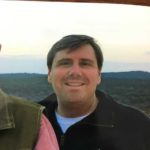 Clint Lynch is the General Manager of Oakwood Cemetery and Historic Waco Foundation’s incoming vice president. He attended Sam Houston State University where he received a degree in history and political science. In 1998, Clint became a historian with the State Cemetery in Austin where he had the opportunity to use both his love of Texas history and politics. After spending several years as a funeral director in Abilene and Wichita Falls, Clint returned to his hometown of Waco in April 2016 to join the staff at Oakwood Cemetery.
Clint Lynch is the General Manager of Oakwood Cemetery and Historic Waco Foundation’s incoming vice president. He attended Sam Houston State University where he received a degree in history and political science. In 1998, Clint became a historian with the State Cemetery in Austin where he had the opportunity to use both his love of Texas history and politics. After spending several years as a funeral director in Abilene and Wichita Falls, Clint returned to his hometown of Waco in April 2016 to join the staff at Oakwood Cemetery.
The Act Locally Waco blog publishes posts with a connection to these aspirations for Waco. If you are interested in writing for the Act Locally Waco Blog, please email [email protected] for more information.
The Historic Waco Foundation has launched a strategic process to understand Waco’s story from a number of perspectives in order to form future partnerships and programs that would offer the greatest benefit to the community. This post is one in a series to share with you how that work is progressing and how you can get involved. For the rest of the posts in this series, click here: Historic Waco Foundation Series. — ALW
By Patricia Scott, President, Historic Waco Foundation Board of Directors
This is a great time to be part of the Waco community. Waco is growing. We have a vibrant downtown and almost every weekend there is a concert, festival, sporting event, art festival or convention bringing visitors to town. With all of the excitement around town, it is easy to focus on the future, but we must also look at Waco’s past if we are truly going to understand Waco today.
Historic Waco Foundation’s mission is to preserve and present the history of Waco and McLennan County. As an organization, we are the first to acknowledge that though our mission is broad our focus has been narrow. We have focused on the historic homes and the people that built and lived in those houses – and that has limited Historic Waco Foundation to the late 1880’s and a very small group of people in Waco. It is time to look beyond these beautiful houses and focus on the history of Waco in its entirety.
To begin this process, Historic Waco Foundation recently hosted a gathering to gain information and provide direction from the community at large. The gathering attendees came from all sectors of our community and most had no previous knowledge of or participation in Historic Waco Foundation activities.
Prior to the gathering, Historic Waco Foundation sent an online survey to community members and asked that they share it with their networks, and so on. The survey asked respondents to answer three open-ended questions (1) what is important to the people of Waco, (2) what is distinctive about Waco and (3) about what do Waco-area residents care.
In total, Historic Waco Foundation received 37 survey responses. Using those responses as a basis, Historic Waco Foundation developed four additional questions to guide the community gathering conversation.
Question 1: Which untold stories need to be told?
Discussion ranged from an unbiased and full telling of the Jesse Washington lynching to what Waco-area residents have done for recreation through the years. Attendees also mentioned the importance of delineating the history of Waco’s schools, including unique stories like the tunnel under La-Salle, then a two-lane main road, for elementary school children. Conversations also focused on the importance of recognizing the contributions and daily lives of Waco’s African American and Hispanic communities.
Question 2: What are some ways Historic Waco Foundation can tell these stories?
The community gathering attendees offered several fantastic and thought provoking suggestions for how Historic Waco Foundation can share some of the previously untold or rarely told stories with the community. Overall, the suggestions centered on involving more media and technology in our storytelling. Plays and performances are a common way to presented history – think Shakespeare and his Henry plays—and many of the attendees agreed. There was discussion about Historic Waco Foundation collaborating with the arts community, be it visual or performing arts, and involving students who can write, produce, act, sing or perform historical interpretations.
Question 3: What organizations can or should Historic Waco Foundation collaborate with in the future?
Acknowledging the stories that need to be told and employing creative ways to present them is only the first step. Historic Waco Foundation will also engage in robust collaboration with community groups to identify additional stories and truthfully and effectively present them. Thanks to this enthusiastic group of community leaders, Historic Waco Foundation now has an extensive list of possible partnerships.
Question 4: What are some ways Historic Waco Foundation may be able to use its houses in the future?
Historic Waco has struggled with the upkeep of its current houses and has investigated alternative uses for the historic homes. Historic Waco Foundation asked attendees for suggested uses for the homes, and many of the responses mirrored possibilities already discussed and investigated. Stay tuned for more on this. Historic Waco sincerely wants to present the houses in ways that benefit the entire community and accurately capture the stories of all Wacoans.
This community gathering was just the first step in finding our niche within this community. Historic Waco Foundation will take the many suggestions to heart and act on them in ways that will benefit the sustainability of our organization and Waco’s many citizens.
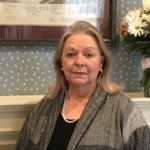 Patricia Scott is President of the Board for Historic Waco Foundation and a native of Waco. Patricia has been a member of Historic Waco Foundation since 2010. She is a Docent at McCulloch House and has served on the Historic Waco Foundation Board for the past three years and as President for the past two years. Patricia and her husband love to travel and make it a point to find a Museum wherever they go. She loves to read and needlepoint, but her greatest joy is her granddaughter, Grace.
Patricia Scott is President of the Board for Historic Waco Foundation and a native of Waco. Patricia has been a member of Historic Waco Foundation since 2010. She is a Docent at McCulloch House and has served on the Historic Waco Foundation Board for the past three years and as President for the past two years. Patricia and her husband love to travel and make it a point to find a Museum wherever they go. She loves to read and needlepoint, but her greatest joy is her granddaughter, Grace.
The Act Locally Waco blog publishes posts with a connection to these aspirations for Waco. If you are interested in writing for the Act Locally Waco Blog, please email [email protected] for more information.
The Historic Waco Foundation has launched a strategic process to understand Waco’s story from a number of perspectives in order to form future partnerships and programs that would offer the greatest benefit to the community. Act Locally Waco sat down recently with Rae Jefferson, Communications Director at Creative Waco, for a Q&A about the Historic Waco Foundation’s recent community gathering and the overall initiative. This post is the second in a series to share with you how that work is progressing and how you can get involved. For the rest of the posts in this series, click here: Historic Waco Foundation Series. — ALW
ALW: What is your connection to Historic Waco Foundation? Are you on the board?
RJ: I am not on the board, but I am part of a community engagement group convened by Historic Waco Foundation to guide the organization’s process of engaging Waco community leaders to talk about Waco’s history, including the parts not regularly told. As the Communications Director for Creative Waco, I was particularly interested in focusing on how the arts can be useful in telling Waco’s full story.
ALW: Are you a Waco local?
RJ: I came to Waco as a Baylor student, but after graduation, I stepped out of the “Baylor bubble.”
ALW: So you started to see Waco through a fresh set of eyes. In other words, your point of view changed.
RJ: That’s right. For example, I did not even know Historic Waco Foundation had these homes. I saw them around Waco, but I assumed they were businesses.
ALW: Or dentists offices.
RJ: Exactly—and over time I started to learn more about Historic Waco Foundation and now I am seeing a desire within the organization for it to encapsulate more of Waco’s story than it currently does.
ALW: So I am hearing you say that Historic Waco Foundation is launching a re-energizing effort of sorts. What is the first step in the process?
RJ: That is a great question. Historic Waco Foundation convened a community engagement group tasked with planning and carrying out a meeting of community leaders to discuss Waco’s history from a number of perspectives.
ALW: How did you think the community meeting went?
RJ: I think it was a great first step. The community engagement group wanted to ensure we had a number of perspectives, so we invited a diverse group to the meeting, including individuals from interest groups, academic institutions and local nonprofits, among others. It was clear from the conversations in the room that everyone who attended was excited to be there, and it was encouraging to see so many people come out to help with such an important initiative.
ALW: I was at the meeting too, and when you say diverse, I think most people assume you are saying racially diverse, and that was certainly true, but there was also diversity in age, gender, length of time in Waco. What would you say we heard that we would not have necessarily heard if it had not been such a diverse group?
RJ: I had no idea that TSTC was the site of an air force base, and I had not heard much mention of military history during our initial discussions as an engagement group.
There was also talk of the Waco tunnels. Apparently, in the last few years a number of long underground tunnels have been discovered beneath buildings around the city. Their original purpose is still unknown, but it is incredible that there are bits of our city’s history that are still surfacing. No one at my table knew anything about the tunnels, and we would not have if we had not gathered that specific group of people together. I like to think it is an indication that we are on the right track with the work we have been doing.
ALW: What do you hope Historic Waco Foundation will do with the information?
RJ: I hope we begin to tell more stories in a creative way. I am part of a creative organization, so I am partial to using art as a way to tell the stories of the past. I also hope Historic Waco Foundation will be able to engage more people in our collective history and that there will be some level of reconciliation with Waco’s story, regardless of on what side of history an individual’s own history falls. And I also think we can work to get the younger generations excited about Waco’s history.
ALW: You know, I have been thinking about that a lot. Why is it important to get young adults interested and engaged in history?
RJ: I facilitated one of the tables at the community gathering, and my table had a former history teacher. He was explaining that his middle and high school students did not care about history so it took the fun out of history for him. Thinking back to my own experience, I hated history class. Now, especially with the way things are in our country, if you do not have an understanding of the history of the people that live around you then you cannot have empathy. If you understand history, you can take steps not to repeat it.
ALW: Tell us a little about the community leaders who participated in the gathering.
RJ: Of course when you think of community leaders you think of leaders from area nonprofits, the arts and businesses, but we also tried to center in on individuals who are not necessarily thought of as traditional community leaders but who play an essential role in the community. For example, the longtime Director of the Richland Mall was at the gathering. If you want to shop in Waco, you go to the Richland mall. It really goes to the notion that history is happening all around us—it is not just sitting on a shelf somewhere.
ALW: Why is this initiative so important now, locally speaking and looking at the big picture?
RJ: You can really feel a shift happening across Waco. For example, millennials are no longer the generation in college. We are looking to start our careers and settle down, and we are seeing that students are graduating and staying in Waco or leaving for a short time and coming back. Waco is also experiencing immense growth. We are seeing an influx of tourism and with it a fresh energy. But, with that comes the need to step back and recognize our entire community.
ALW: Is there anything from the meeting you would like to work on personally?
RJ: Yes! Many people suggested using the houses as venue space for art shows and concerts; I love the idea of combining history with the arts.
ALW: Lastly, how do others get involved?
RJ: We are currently working on next steps, but in the meantime, we are encouraging area residents to reach out to the Foundation directly at [email protected] or (254) 753-5166 with questions, comments and stories about the people and places that have made Waco what it is today.
 Rae Jefferson is a creative, Netflix-er and marketing professional, in that order. Originally from Houston, she stuck around Waco after graduating from Baylor University with a B.A. in Journalism, PR & New Media and a minor in Film & Digital Media. Now she is the Director of Marketing and Communications at Creative Waco, where she is paid to tell people that there is, in fact, really good art in Waco. She loves her community and learning what it means to serve others, but most of all, she loves her “dog-daughter,” Charlie.
Rae Jefferson is a creative, Netflix-er and marketing professional, in that order. Originally from Houston, she stuck around Waco after graduating from Baylor University with a B.A. in Journalism, PR & New Media and a minor in Film & Digital Media. Now she is the Director of Marketing and Communications at Creative Waco, where she is paid to tell people that there is, in fact, really good art in Waco. She loves her community and learning what it means to serve others, but most of all, she loves her “dog-daughter,” Charlie.
The Historic Waco Foundation has launched a strategic process to understand Waco’s story from a number of perspectives in order to form future partnerships and programs that would offer the greatest benefit to the community. This post is the first in a series to share with you how that work is progressing and how you can get involved! For the rest of the posts in this series, click here: Historic Waco Foundation Series. — ALW
By Ashley Wucher
Humans are, generally speaking, emotional creatures. We digest and retain information best when packaged in a way that allows us to connect emotionally with the information presented. Perhaps, then, it should come as no surprise that storytelling has, for so long, been society’s primary form of communication. In fact, humans used stories even before written language as one of the very first forms of communication.
Fast forward to today, and we are still a society of storytellers. We package difficult concepts in a familiar story to teach our children from grade school through secondary education. Families tell stories of grandparents and great-grandparents as a way to keep the memories of loved ones alive. Cities use stories to articulate their communities’ culture through historical museums, foundations and exhibits. Waco has some great examples of this kind of storytelling such as the Waco Hispanic Museum, now in its third year, and the 2016 Historic Waco Foundation exhibit “Footprints of African Americans in McLennan County” that spotlighted major, yet largely unfamiliar, contributions by local African Americans to the region.
 The Waco community has made great strides in recent years to create a space for listening to the stories of the people and places that have made Waco what it is today—but we have long way to go in order to articulate a more complete history of our community that is representative of every Wacoan.
The Waco community has made great strides in recent years to create a space for listening to the stories of the people and places that have made Waco what it is today—but we have long way to go in order to articulate a more complete history of our community that is representative of every Wacoan.
Historic Waco Foundation, a group that has long considered itself the storytellers of Waco’s history, has begun to broaden its work and follow its long-held mantra: Preserve, Educate and Inspire. The organization is stepping outside of the historic homes to listen to the community in an effort to become better storytellers of Waco’s full history.
The group gathered local leaders representing the Waco-area’s diverse communities on September 27 to discuss the rarely told and untold stories of the people and places that make up the City’s history. The gathering was the first step in a larger strategic process of understanding Waco’s story from a number of perspectives in order to form future partnerships and programs that would offer the greatest benefit to the community. Historic Waco Foundation convened a working group that identified community leaders from across the greater Waco-communities, but the group is now asking for input from the greater Waco community.
Waco-area residents can submit their comments, questions and stories to [email protected] or by mail to Historic Waco Foundation, 810 South 4th Street, Waco, Texas 76706.
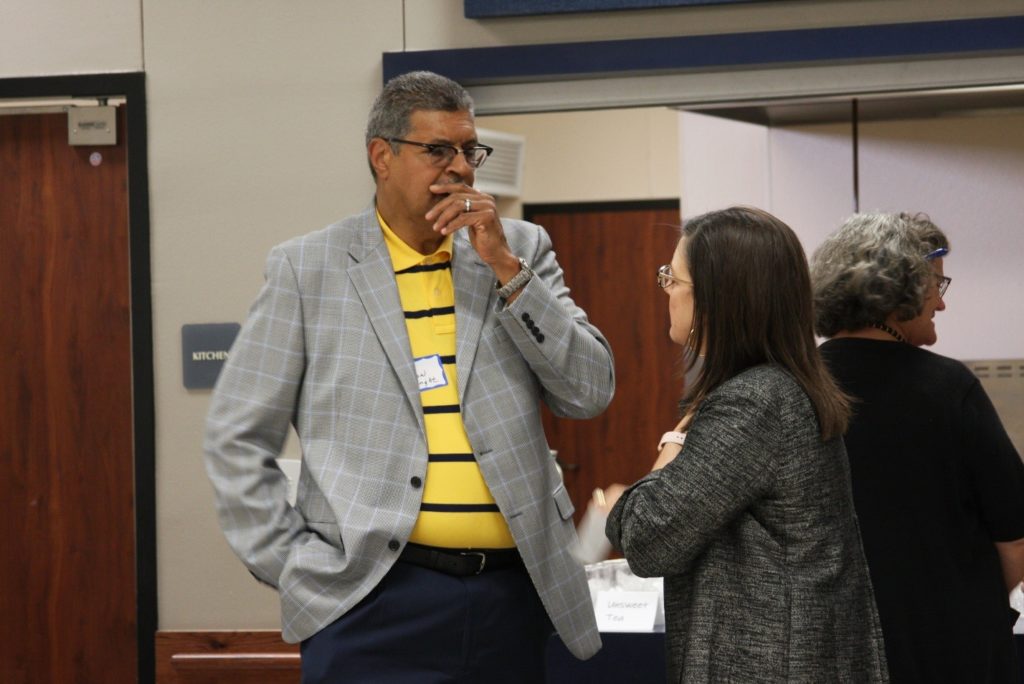 The group discussed the well-known stories of World War II hero Doris Miller and Waco-born Gospel singer, Jules Bledsoe, but it also focused on the stories that have not gotten the attention they deserve, like the Starlights, a Waco-based Mexican-American dance band popular throughout Central Texas in the 60s.
The group discussed the well-known stories of World War II hero Doris Miller and Waco-born Gospel singer, Jules Bledsoe, but it also focused on the stories that have not gotten the attention they deserve, like the Starlights, a Waco-based Mexican-American dance band popular throughout Central Texas in the 60s.
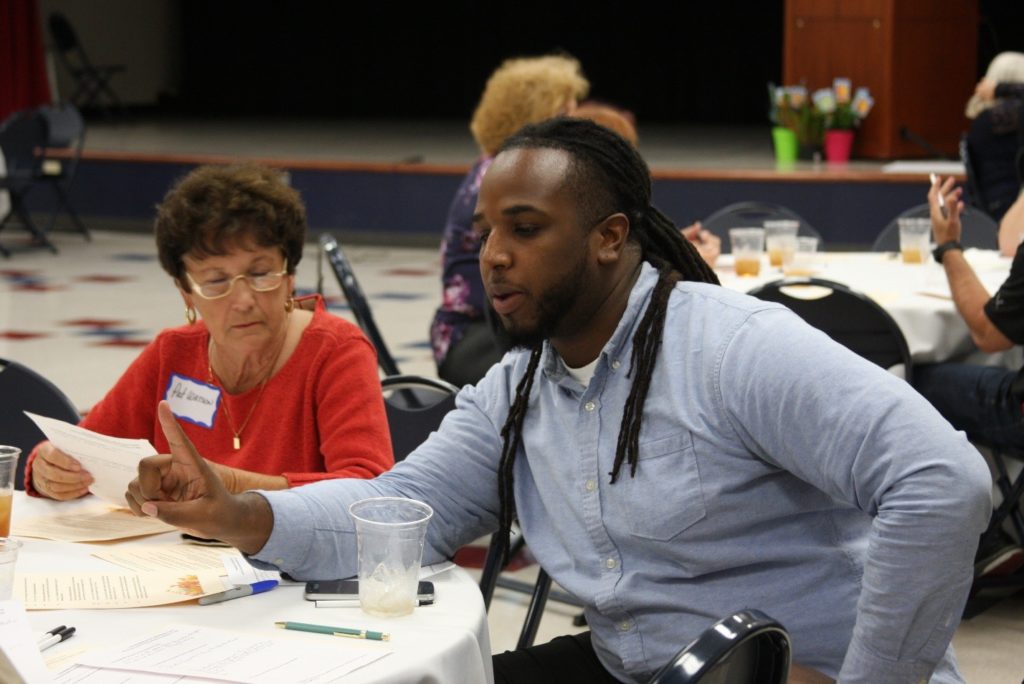 East Waco community organizer, Cuevas Peacock, said the gathering is only the first step in a larger strategic process of understanding Waco’s story from a number of perspectives.
East Waco community organizer, Cuevas Peacock, said the gathering is only the first step in a larger strategic process of understanding Waco’s story from a number of perspectives.
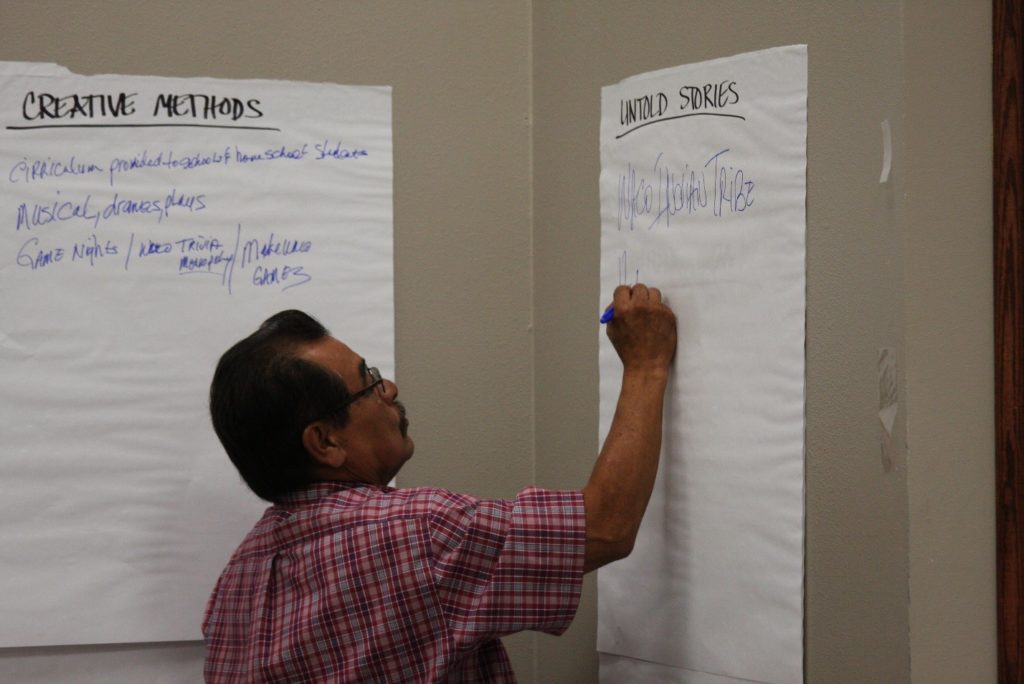
Louis Garcia, Chairman of the Waco Hispanic Museum at the South Waco Community Center, said he looks forward to working with Historic Waco Foundation to tell the story of Waco’s Hispanic families, past and present, as the group works to build a Wacoan can see themselves represented.

Ashley Wucher is Assistant Director of Community Public Relations at the Waco Foundation. Ashley graduated magna cum laude from Baylor University with a Bachelor of Arts in Journalism/Public Relations, where she served as the News Editor for the Baylor Lariat. Ashley also earned her Masters of Jurisprudence from Michigan State University College of Law. She is thrilled to return to Waco and looks forward to bringing people and ideas together to help the city realize its collaborative vision.
